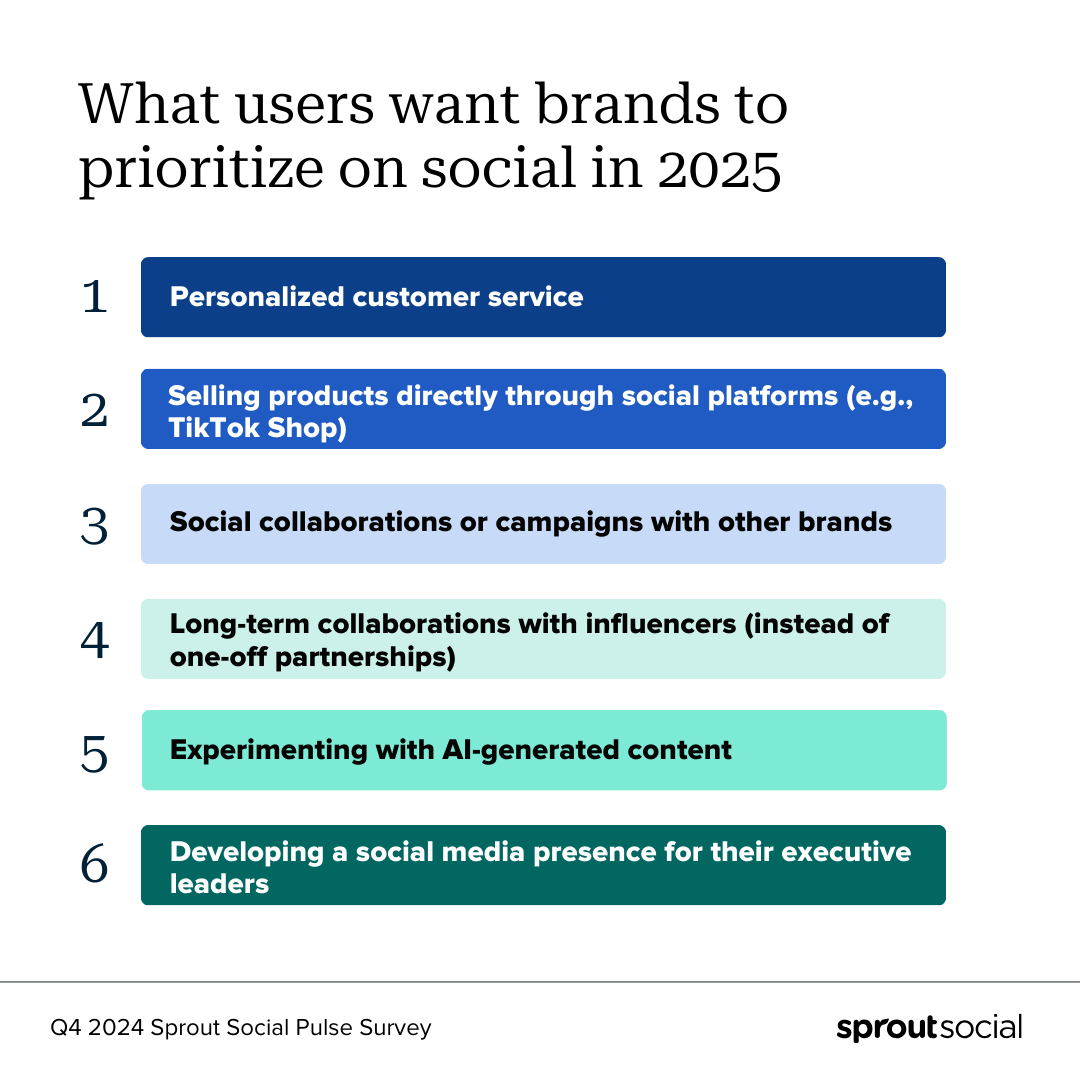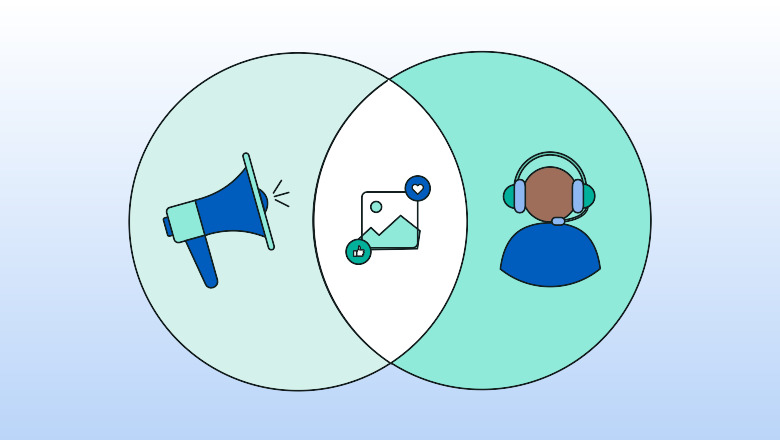Field tested tips for aligning customer service and marketing
If a business is an orchestra, then every department is its own instrument. When teams work in isolation, the result is simply noise. When everyone unites around shared goals, beautiful music is made. And there’s no sweeter harmony than what’s created through collaboration between customer service and marketing.
According to a Q4 2024 Sprout Social Pulse Survey, the top item consumers want companies to prioritize on social media in 2025 is personalized customer care. People want customer service teams to meet them where they are—and that’s on social.

Meeting these evolving expectations isn’t a checkbox activity; it’s an investment in a long-term strategic partnership. This article explores how marketing and customer service teams can collaborate today to deliver better customer experiences tomorrow.
Why your marketing and customer service departments need to work together
In a competitive market, the only way to win is to be customer obsessed. When marketers collaborate with customer service teams, they get unparalleled insights into the driving forces behind customer experiences. Grounding marketing strategies in customer feedback elevates initiatives big and small.
Customer service teams, on the other hand, gain opportunities to amplify messaging around key pain points, helping reduce case volume and freeing them to address more complex customer needs.
If that doesn’t make the case, don’t worry—we’re just scratching the surface. Here are three more benefits businesses gain from close collaboration between customer service and marketing teams.
It’s what consumers expect
A Q1 2024 Sprout Pulse Survey shows that 80% of consumers strongly or somewhat agree they use social media for customer service needs more now than they did a year ago. This number goes up to 89% for Gen Z.
We're at the start of the social customer care boom. As Gen Z and Gen Alpha preferences evolve, consumer expectations for social customer service will grow—driven not only by demand but also by brands that innovate and set new standards.
It helps each team reach their respective goals
Increasing the flow of customer feedback and insights between customer service and marketing teams elevates the performance of both functions. Just ask the team at Instant Brands.
The company boasts a renowned portfolio of seven kitchenware brands, including Corelle, Pyrex and Instant Pot. Managing customer service for such a diverse lineup requires constant innovation guided by consumer insights.
“The collaboration between our departments is vital for the business,” says Social Media Manager Camille Pessoa. “Working this closely together is how we achieve the success and goals that we strive for.”
It surfaces opportunities for surprise and delight
When customer service and marketing teams work together, they can better identify and act on opportunities for surprise and delight.
For example, when a member of the Instant Pot Facebook Group shared that her beloved appliance had been destroyed after a hurricane, the Instant Brands team worked quickly to send her replacement, along with their well wishes.
Moments like these can solidify your brand’s place in customers’ hearts and minds. They also create valuable user-generated content opportunities that can help you gain new fans, too.
How to align marketing and customer service teams
Before exploring ways to collaborate, let's cover two key ways to lay the foundation for smoother teamwork between marketing and customer service teams.
Shared resources
Brand guidelines, promotional calendars, strategy briefs—the resources that keep marketing team members on the same page can also do the same for your teammates in customer service.
Simple things, like providing an advanced look at your social media calendar, can give teams time to identify opportunities or flag potential issues proactively. Think about it: the content you share can significantly impact the number of service inquiries you receive on the platform.
For example, this TikTok on the do’s and don’ts of owning an Instant Pot received over 505,000 views.

It’s an incredibly helpful piece of content that was bound to generate quite a bit of engagement. Without a proper heads up on when and where it would be published, the Instant Brands social customer service team wouldn’t have been prepared to address the 100+ comments received on the video.
By collaborating with your customer service team, you provide them with an opportunity to review scheduled content for clarity. Leveraging their firsthand knowledge of customers, they can proactively address potential issues before they arise.
Shared tools
While eliminating data silos may seem like an obvious choice, the reality is that investing in new shared tools takes a lot of work. It involves the challenge of aligning stakeholders on priorities and the complex task of integrating new and existing systems—no easy feat, indeed.
However, it’s important to remember that connected tools lead to reduced operational hassles for teams and result in superior customer experiences. You simply can’t argue with those results. Just ask the team at Instant Brands.
Customers talk about us on social media all the time, and that can be positive or negative. What matters is that we address them as fast as we can. That’s why Sprout’s integration with Salesforce is so crucial for us. It keeps us connected with the service agents that handle escalations so we can extinguish fires with minimal risk.













